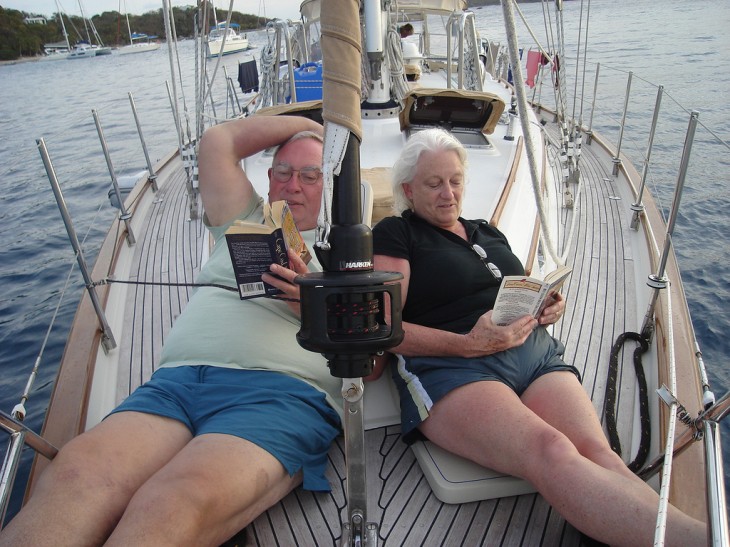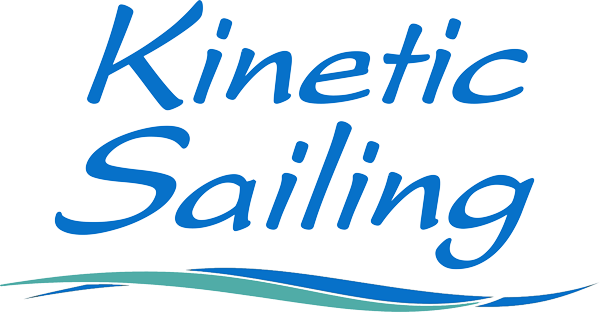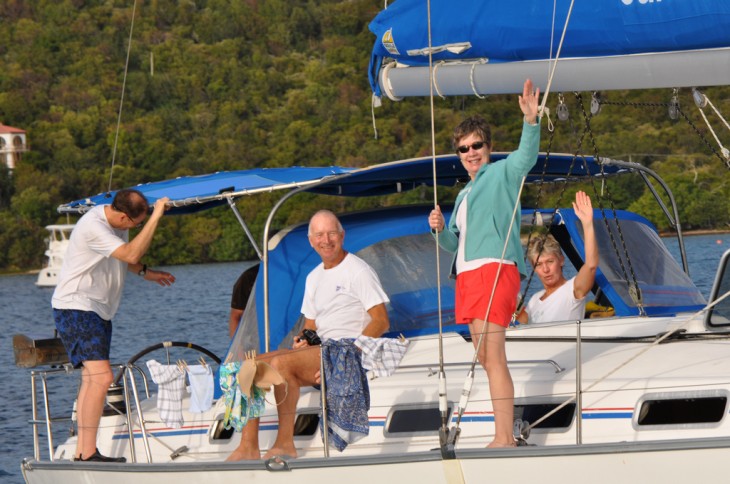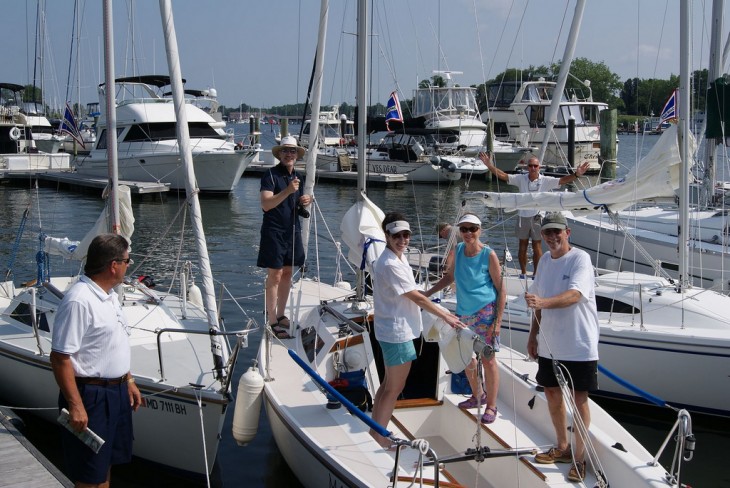
By Capt Lisa Batchelor Frailey
All ready for your bareboat charter? Trip booked, provisions ordered, clothes packed …is there more? In the preceding articles, you learned all about the nitty gritty topics; now for the fun stuff!
In this article you’ll find a selection of great gadgets and entertaining items to help you get the most from your charter experience. Verify what equipment is already onboard your charter boat, and augment accordingly. Minimalists go camping – everyone else, read on!
Entertainment / Communications:
Camera
With so many memories to capture, you’ll want a camera that’s easy to pack and use. Be sure to bring appropriate batteries or recharging unit, and additional memory cards. So sea spray won’t be an issue, bring a camera-sized waterproof bag (carried at dive or kayak shops) or Ziploc. Consider a disposable underwater camera for snorkeling trips.
Music
What’s a charter without music? Most charter boats will have a radio/CD player, so bring your favorite CDs. For iPod/MP3 users, check if the system is compatible and bring appropriate attachments or speakers.
Cell Phone
If you need to have cell phone connectivity, you’ve got several options. Check with your cell phone provider to see if you’ll have coverage in your charter area, and verify the roaming rates (they may be significant). You can rent “global” phones from any number of providers before your charter. Many charter companies will provide you with a local cell phone with a minimal amount of airtime credit; you’ll have the option to purchase additional airtime.
Internet
If you use a cell phone/laptop with an internet access plan, verify the data rate before going abroad; you may want to disable the data feature. You’ll find many wi-fi hotspots in the islands (some free) where you can connect your phone, blackberry or tablet or iPad. Many great sailing and navigation apps are available, and are fun to try on vacation. Whether or not to answer emails from work – your choice!
Inverter/chargers
Be sure you have a way to power or recharge your electronics. Most boats will have 12V chargers, similar to your car’s cigarette lighter/charger. Bring a small USB adaptor plug for the 12V outlet – you can then charge multiple USB-powered devices directly. Boats MAY have an inverter to energize the 110V/220V outlets onboard when away from shore power – check with your charter company. A good alternative is an inexpensive inverter (e.g. Black & Decker 100W) which plugs into the boat’s 12V outlet and allows you to power/recharge low-wattage 110V or USB items – generally sufficient for recharging phones, cameras, etc. All of this puts a demand on the boat’s domestic battery supply, so watch your power consumption carefully. Bring batteries where you can.
Down Time Entertainment
You’ll have some “down time” in anchorages, on longer passages, or on quiet evenings (depending on your charter companions), so bring paperbacks, playing cards, or travel-sized board games. Cards from Trivia games (especially the nautical variety) pack well, and provide lots of entertainment. If you’re sailing with kids, be sure to bring their favorites. Consider a kid’s logbook (Weems & Plath) or journal.

Phrase Book
If you don’t speak the native language in your charter area, bring along a phrase book to help you communicate. Locals will appreciate the effort made to speak their language, and you’ll have a lot of fun learning! Practice a few greetings before you go; someone on your flight is bound to help you with pronunciation.
Christmas Lights
Colored LED Christmas lights add a festive atmosphere to your cockpit – but not while underway, please! They also make it easy to identify your boat when dinghying around a crowded anchorage at night. Solar-powered lights are perfect for the sunny tropics; buy them when Christmas lights appear in the stores.
Snorkeling Gear
Your tropical charter will likely involve a good bit of snorkeling. Most charter companies provide or rent snorkeling gear, and have a variety of sizes available. Many people prefer to bring their own mask and snorkel (fits easily in a duffle). If you wear glasses, consider ordering a prescription mask before your charter.
Daypack
For excursions ashore, you’ll want a water-resistant daypack or beach bag to carry your gear. Attach an ID tag with your name, boat’s name and charter company.
Seamanship:
Cruising Guide
Most charter boats will have a local cruising guide onboard. The guides contain a lot of information useful to your charter planning, so you may like to purchase your own copy well before your trip. Record notes to keep the memories fresh for future trips.
Charts
If you’re a chart junkie as I am, you’ll want to bring your own charts, either paper or electronic. Check what’s onboard your charter boat, and augment as you see fit. If you’re particular about your nav tools, bring your own.
Handheld GPS
A bit of redundancy to your boat’s chartplotter (if it has one) and your paper charts. Be sure your chart chip is reliable for the charter area. Many smart-phones have GPS capability; be sure to download charts while you have good data access. No matter how many gadgets you have onboard – don’t neglect your basic piloting skills!
Handheld VHF
Great to have in the cockpit, if the boat doesn’t have a cockpit microphone. Also useful for those in the dinghy/shore party to communicate with those staying onboard, or between helm and bow when anchoring. Choose a working channel so you don’t crowd Channel 16.
Burgee
Helps your boat stand out from the crowd of charter look-alikes, and identifies your sailing club. Your charter boat probably won’t have the traditional masthead pigstick, so fly your burgee on the starboard flag halyard, below the host nation’s courtesy flag.
Flashlight
Your boat will have flashlights onboard, but a small personal LED flashlight will come in handy for night use in an unfamiliar cabin, or for night-time dinghy excursions.
Binoculars
Generally included on your charter boat, but if you are particular about binoculars (whether to spot navigation marks, birds, or other charterers), bring your favorites.
Leatherman/Multipurpose Tool
Useful tools for myriad purposes, ashore or afloat. Pack in checked baggage only, or you’ll part company with it at the security gate.
Domestics:
Clothespins
A pack of clean new clothespins will ensure your swimsuit is not clipped onto the lifeline with the mildewed, rusty pins that might already be onboard.
Soft-sided Cooler
Very useful for carrying ice & groceries during charter (which you’ll need to transport in the dinghy). Chill and store easy-access beverages here to reduce excess fridge openings. Use it to pack some provisions onto your charter (see Provisioning Article, Sep 2010), and to tote your souvenirs home!
Ziploc bags
Pack a variety of sizes, use to store documents, first aid supplies, food, wet swimsuits, laundry, treasures. For easy packing, remove bags from the box and secure the roll with a rubber band.
Marine Body Wash, Bathing Puff
On a tropical charter, you’ll do a lot of your bathing in the ocean. Savon de Mer makes an excellent biodegradable shampoo and body gel designed for use in salt-water and hard water. An inexpensive bath puff will make a good lather from many soaps and body wash products.
Drawstring Mesh Bag
Perfect to store your shampoo, body wash and bath puff while it dripdries over the stern. Also useful for dunking sandy sandals.
When packing for your bareboat charter, remember – keep it simple, keep it light, keep it fun! Refer to prior ASA E-news articles for tips on Provisioning and Packing your clothing and personal items. Coordinate with your crew so you don’t have too much gear overlap. Follow these guidelines, and have a terrific vacation!
Link to original article: http://www.asa.com/enewsletter/nov2010/bareboat_charter_essentials.html











